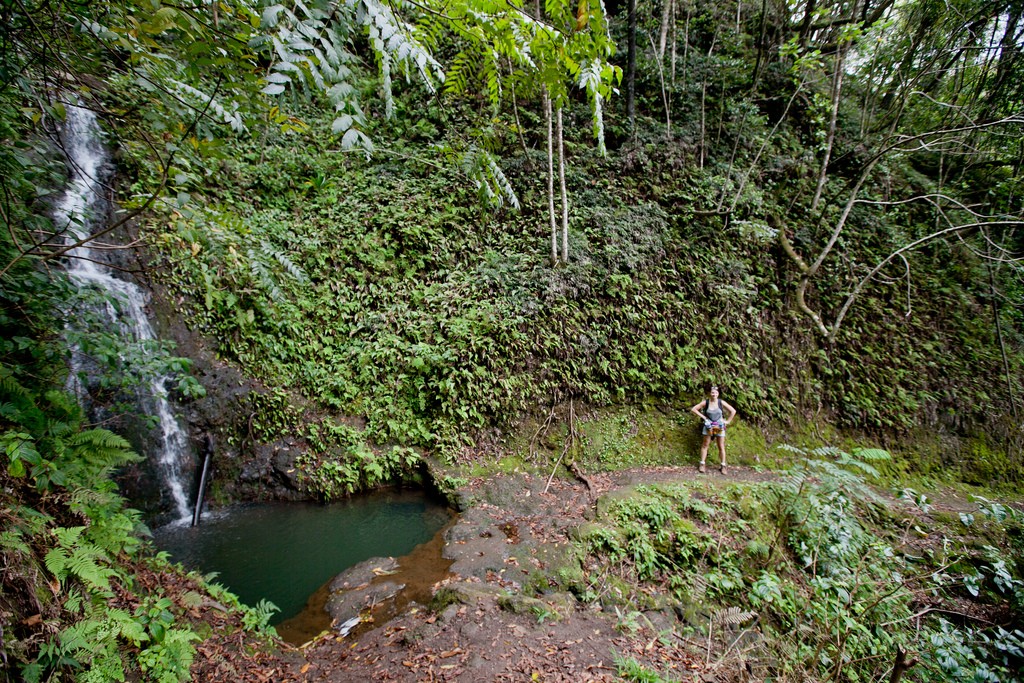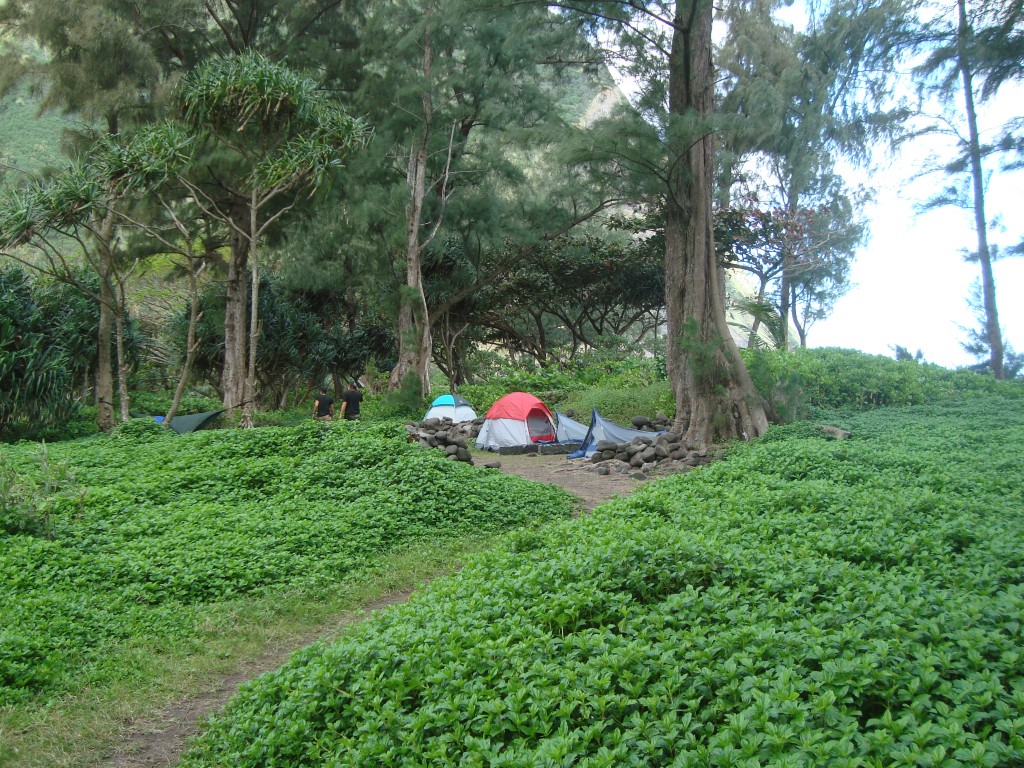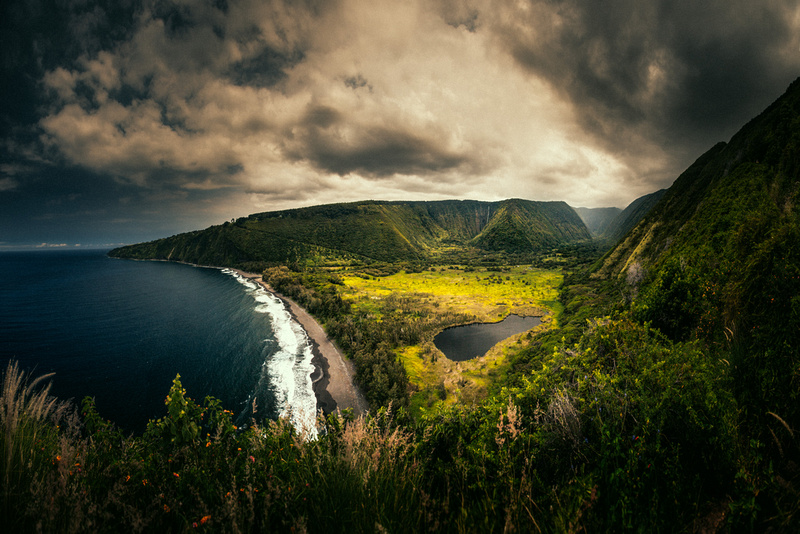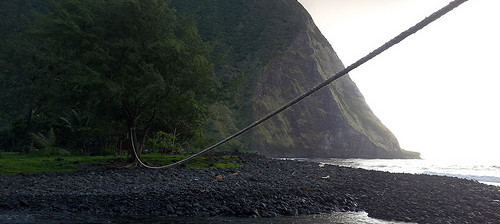The Muliwai Trail is not for casual hikers and is not a day hike. Many experienced hikers initially misjudge the difficulty of the hike. Many hikers also find the return trip to be harder than the trip in. The trail is minimally maintained, steep, eroded in places, rocky, muddy and slippery when wet.
Crossing Waipio Valley
From Waipio Lookout you’ll hike down the road down into the valley. If you can catch a ride with someone with a 4×4, it might help save your strength for the trail. The valley is approximately 1 mile wide and involves crossing through a sometimes waist high river which flows directly into the ocean. The crossing is deeper in the narrow sections and shallower in the wider sections. I prefer to cross in the wider/shallower part of the trail nearer to the ocean. On the other side you can see the western wall of the valley and the Muliwai Trail full of switch backs.
After crossing the Waipio Valley stream, you’ll hike through a wooded area to the trail head at the bottom of the cliff.
Z-Trail
The first ¾ of a mile is a very strenuous switchback trail climbing 1,200 feet to top of the ridge. You won’t wonder why this part of the trail coined the term “Z-Trail”. Near the top, you’ll have a breathtaking look down behind you of Waipio Valley. Great photo spot.
Top Trail
The next 5 miles of the trail is only moderately difficult as you pass up and down through 12 gulches. During this forested (non-native Ironwood, Eucalyptus & other types of trees) hike, there are many stream crossings (There are 13 streams total along the trail). This part of the trail ends as you begin to see the beautiful Waimanu Valley.
Trail down to the Waimanu Valley
The trail down to the Waimanu Valley is similar to the Z-trail up from Waipio Valley. It’s extremely steep and can be dangerous. This part of the trail is not a fun part of the return trip. Every step down you take, you’ll have a similar step up when you return.
From the trial, you’ll not only be able to see the beautiful Waimanu Valley but the many waterfalls that line the walls of the valley including Wai’ilikahi Falls.





